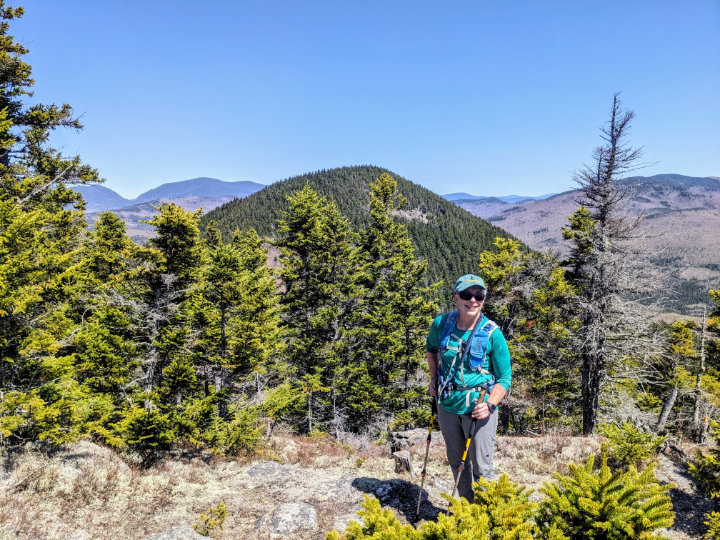The Man Who Thought He Was A Tree
by Robert Hanaford Smith, Sr.
Weirs Times Contributing Writer

His name is T.E.M. White and I call him a person of interest, not because law enforcement authorities had any special interest in him, but because reading about his life reveals him to have been an interesting person. Probably few people who read this even know about him because he died in 1909, but for thirty years this photographer attracted attention in North Conway, New Hampshire.
Thomas Edward Mullikin was born in 1834 in the town of Newburyport, Massachusetts, but at the age of eight he became a resident of New Bedford, Mass. when he was adopted by his mother’s brother and was given the added name of White, thus the T.E.M. White label with a nickname of Ned. Professionally White received accolades for his photography of the scenery of the White Mountains of New Hampshire, particularly in regards to his glass transparencies; however, his popularity as a person involved a lot more than his skills with a camera. He was born into a family with musical talents, so probably none of his acquaintances were surprised to find that he, too, possessed special skills in the area of music. To say that he was proficient in the art of whistling would be an understatement because he was known for whistling the tunes of entire operas, doing this as he went about his daily work activities. White was also a singer who was a member of the New Bedford Choral Society, and whose rendition in song of “ Hamlet, Prince of Denmark”, was said by a friend, Ellen McRoberts Mason, in a Granite Monthly magazine article to be “something to remember”. He also played the violin.
Ned, to use the name his friends used, was a mechanically minded young man who was a cabinet maker and showed signs of becoming an inventor before choosing the photography career. Described by his friend as being “of delicate constitution all through his childhood ” White suffered from an ailment that resulted in the amputation of one of his legs when he was about twenty-one years of age, so he responded by putting his inventive and mechanical skills to work by making himself an artificial leg.
In 1876 Mr. White married a landscape artist, Gabriella F. Eddy, and it was two years later that they moved to North Conway where they built a house at a place called Tanglewild , though they continued to spend some winters in Massachusetts.
That Mr. White thought that he was a tree is not a joke, though it doesn’t mean that he thought he was a tree at the same time that he was a man. He was unconventional in his religious beliefs and behavior and the trees were said to have been to him as “human friends”. He believed in reincarnation and, with his admiration for and delight in trees, would say, according to his friend, Ellen Mason, “I am sure that I was a tree once!.”

Though apparently frail as a child, Ned White’s physical appearance as a man, despite the artificial leg was of a tall, slender, and muscular man with long, reddish-golden, curly hair (which turned white), with blue eyes. This photographer was active in his physical pursuits, engaging in mountain climbing and being known especially for his swimming and skating skills. In his childhood during the summer he would meet with his friends every day at a certain, private pool in the Saco River to swim, and, in his adult years, would be seen swimming in the Saco River with his long white hair floating on the water.
The little that I have learned about this outdoor loving man who died in 1909 makes me inclined to believe that the popularity he enjoyed was as much a result of his kind and generous personality as his excellent skills as a photographer. Mason wrote “In the summer time the White’s house was filled with their friends, charming, cultured persons who formed a delightful company.” His interest in country living and appreciation of those who grow the things we eat, the farmers, led Ned to the Patrons of Husbandry, also known as the Grange, and he became a member of the local Pequawket Grange. He was chosen to be the chaplain of the group and the walls of the Grange Hall were adorned with his landscape pictures.
Ellen McRoberts Mason’s tribute to the man who thought he must sometime have been a tree characterized Thomas Edward Mullikin White as a “ beautiful character” who lived on a higher plane than most people ”, and whose “presence radiated good cheer and often jollity.”
Ned and Gabriella White were known for their generosity, following the principle “What you give away must be of your best. The quality of what you sell matters less.”
T.E.M. White died on December 16, 1909. These many years later I wonder if any of you who read this have a photograph produced by Mr. White, or a landscape painting by Gabriella White.




